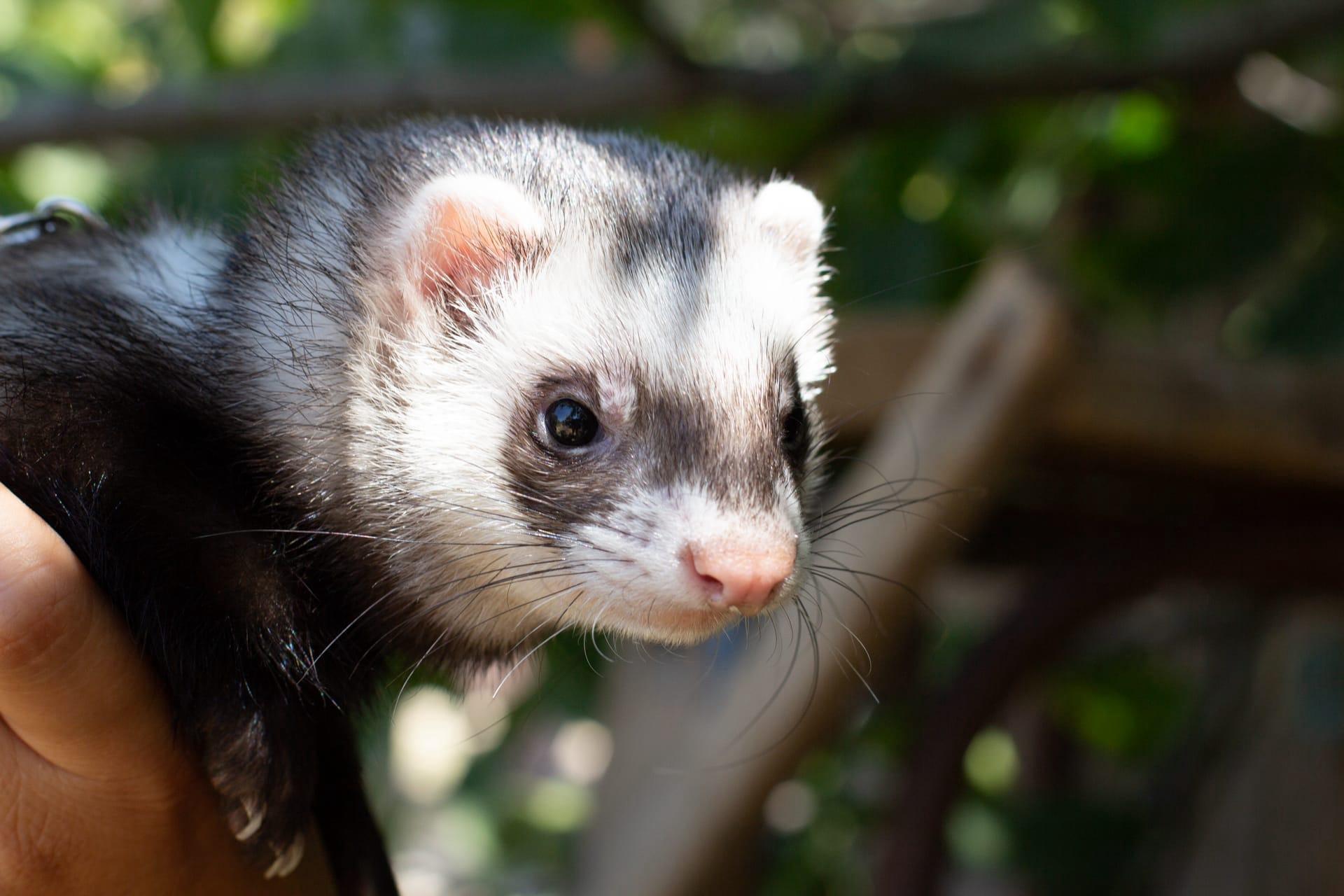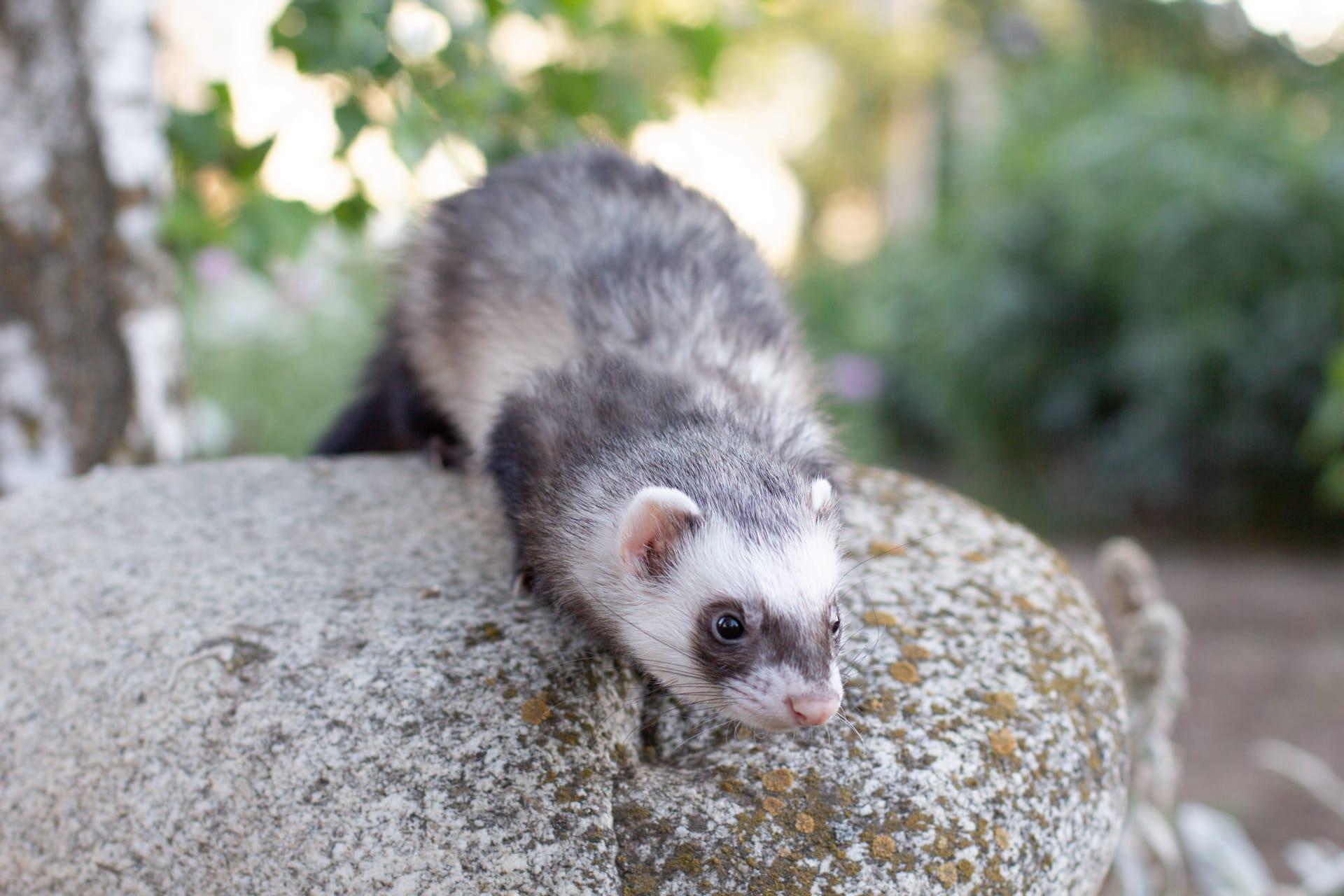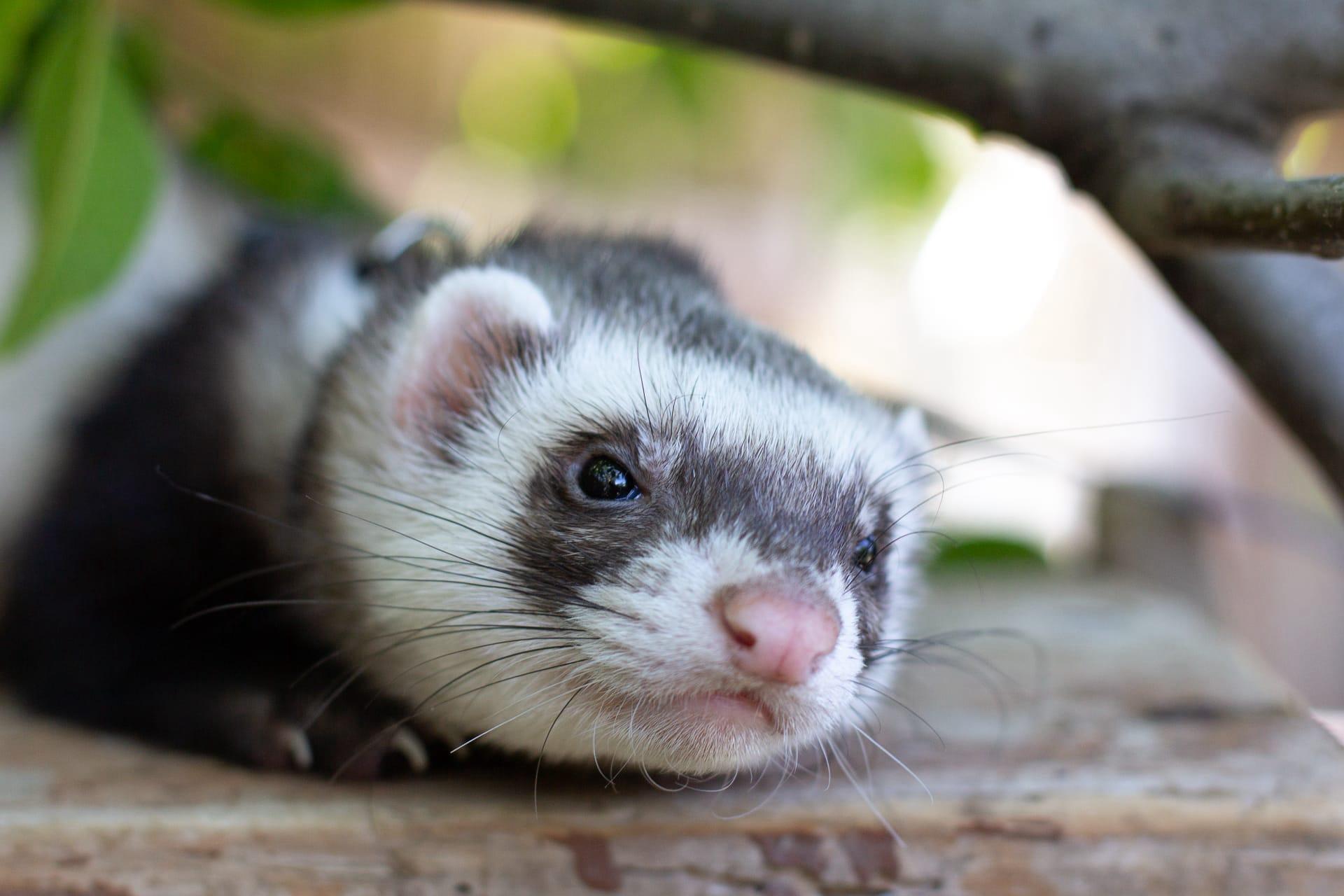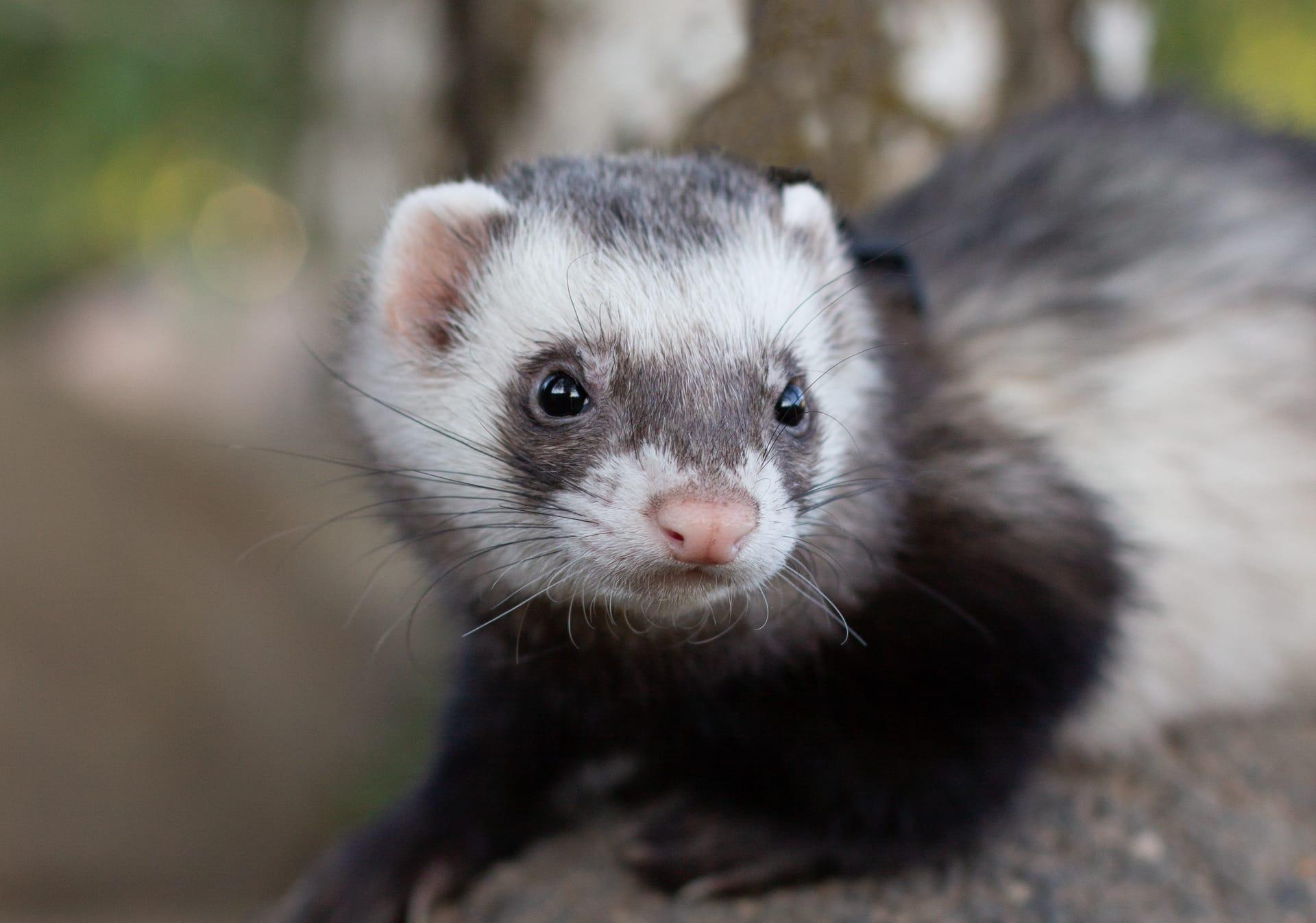Ferret Characteristics
- Home /
- Mini Encyclopedia /
- Animal /
- Ferret Characteristics
1
Ferrets, small yet charismatic members of the weasel family, possess a unique set of physical characteristics. Adult ferrets typically measure about 51 centimeters (20 inches) in length, including a 13-centimeter (5-inch) tail, and weigh between 0.7 to 2 kilograms (1.5 to 4.4 pounds). Males are usually larger than females. Their lithe, slender bodies enable them to navigate narrow spaces with ease. As for their lifespan, ferrets generally live for 6 to 10 years, though some may reach the ripe age of 12 with proper care.
Among their most remarkable organs is the anal scent gland, similar to that of skunks. When threatened, ferrets can release a pungent odor from these glands to deter predators. The scent is a natural defense mechanism and is more intense in wild ferrets compared to domesticated ones. Interestingly, in many countries, pet ferrets have these glands surgically removed to minimize the odor, a procedure that is generally safe and well-tolerated by the animals.

2
Question: Do ferrets make good pets for everyone?
Answer: Ferrets can indeed make delightful pets, known for their playful, curious, and affectionate nature. However, they require a dedicated, patient owner who understands their needs. Ferrets are highly social animals, needing several hours of play and interaction with their human companions or other ferrets daily. They are also notorious for their mischievous behavior and have a penchant for hiding small objects. Ferrets demand a diet rich in protein and fat, and their living space requires regular cleaning due to their natural musky odor. As such, while ferrets are wonderful companions for the right person, they may not be suitable for everyone, especially those looking for a low-maintenance pet.

3
Ferrets are exceptionally agile and energetic animals, exhibiting a playful and inquisitive nature. Their flexible spines and slender bodies allow them to twist and turn through tight spaces with ease. This agility makes them adept at exploring and getting into various nooks and crannies. Ferrets also possess a unique 'weasel war dance', a series of frenzied, sideways hops, which is both a predatory behavior and a playful act to entice playmates.
In terms of hunting and feeding, ferrets are carnivorous, relying heavily on a diet rich in meat. In the wild, they are skilled hunters, primarily preying on small mammals like rodents. Their hunting technique is a blend of stealth and agility, often involving a quick, lethal bite to the prey's neck. Domestic ferrets retain these instincts, and thus, their diet needs to be rich in animal protein, often supplemented with specially formulated ferret food to maintain their health and energy levels.

4
Ferrets, both wild and domesticated, thrive in environments that offer both space and complexity. In the wild, they inhabit a range of habitats including forests, grasslands, and suburban areas. They prefer environments where they can tunnel and hide, often making their dens in burrows abandoned by other animals. Domestic ferrets need a large, multi-level cage for sleeping and resting, and a safe, enclosed area for play and exploration.
Regarding reproduction, ferrets have a distinct breeding season, typically from March to August. Females, known as jills, can become pregnant twice a year and give birth to litters ranging from 3 to 7 kits after a gestation period of about 42 days. Newborn kits are blind and deaf at birth, relying completely on their mother. They develop rapidly, opening their eyes at around 34 days and becoming independent at around 3 months of age.

5
Book: "Ferrets: The Complete Guide" by Kim Schilling. This comprehensive guide, published in the United States in the early 2000s, is a treasure trove of information for both new and experienced ferret owners. Schilling, an expert in ferret care, covers a range of topics including housing, feeding, health care, and training. The book is renowned for its practical advice and in-depth coverage of ferret behavior and socialization.
Book: "The Joy of Ferrets" by Karen Dale Dustman. Published in the United Kingdom in the late 1990s, this book delves into the enchanting world of ferrets. Dustman, a seasoned ferret enthusiast, provides insights into the unique personality of ferrets, their care requirements, and amusing anecdotes from her experiences. The book stands out for its engaging narrative style, making it a delightful read for anyone interested in these playful creatures.